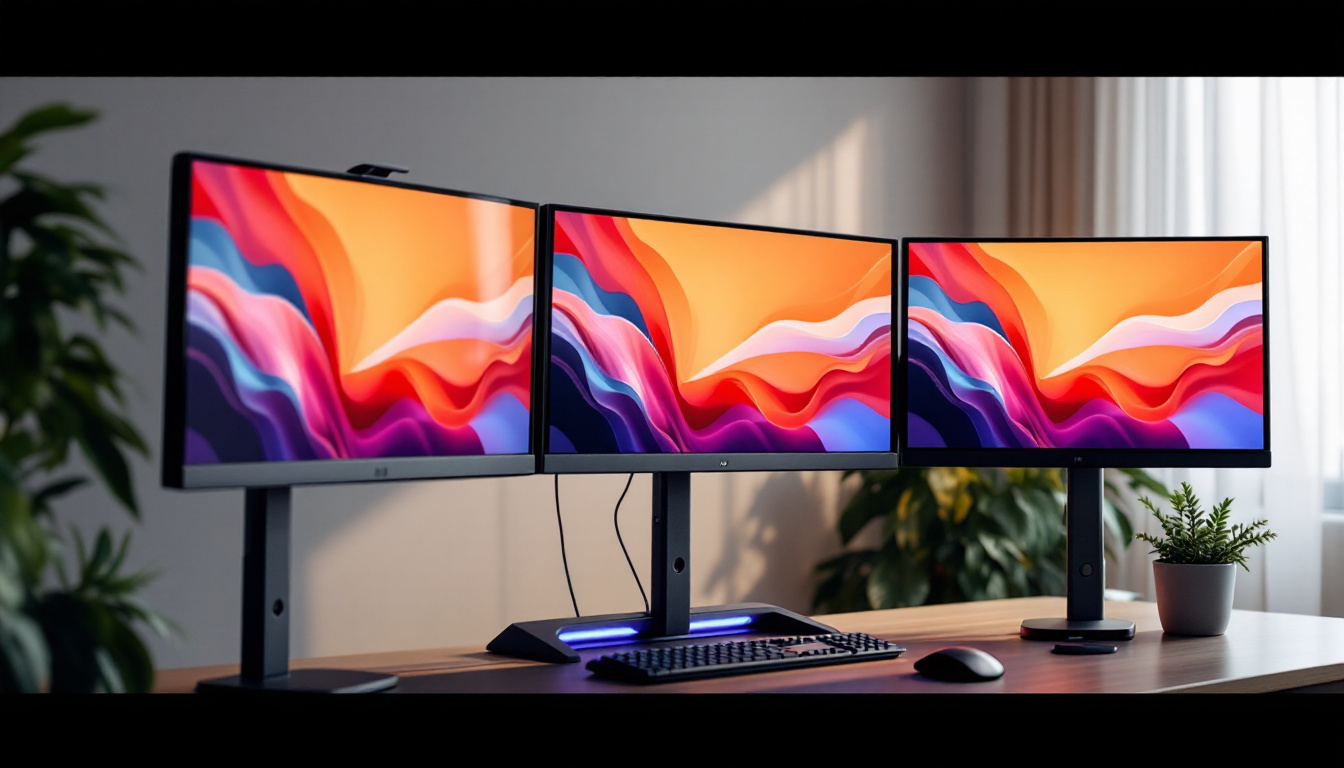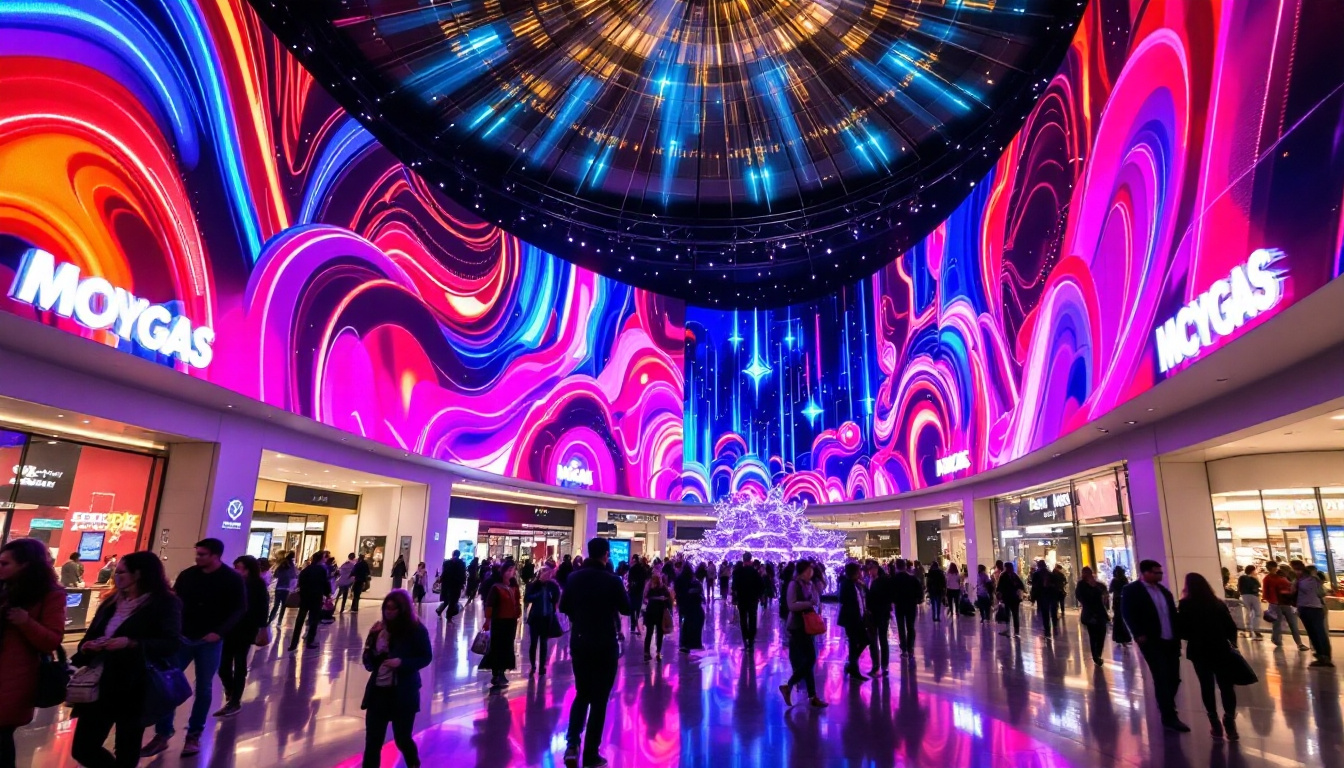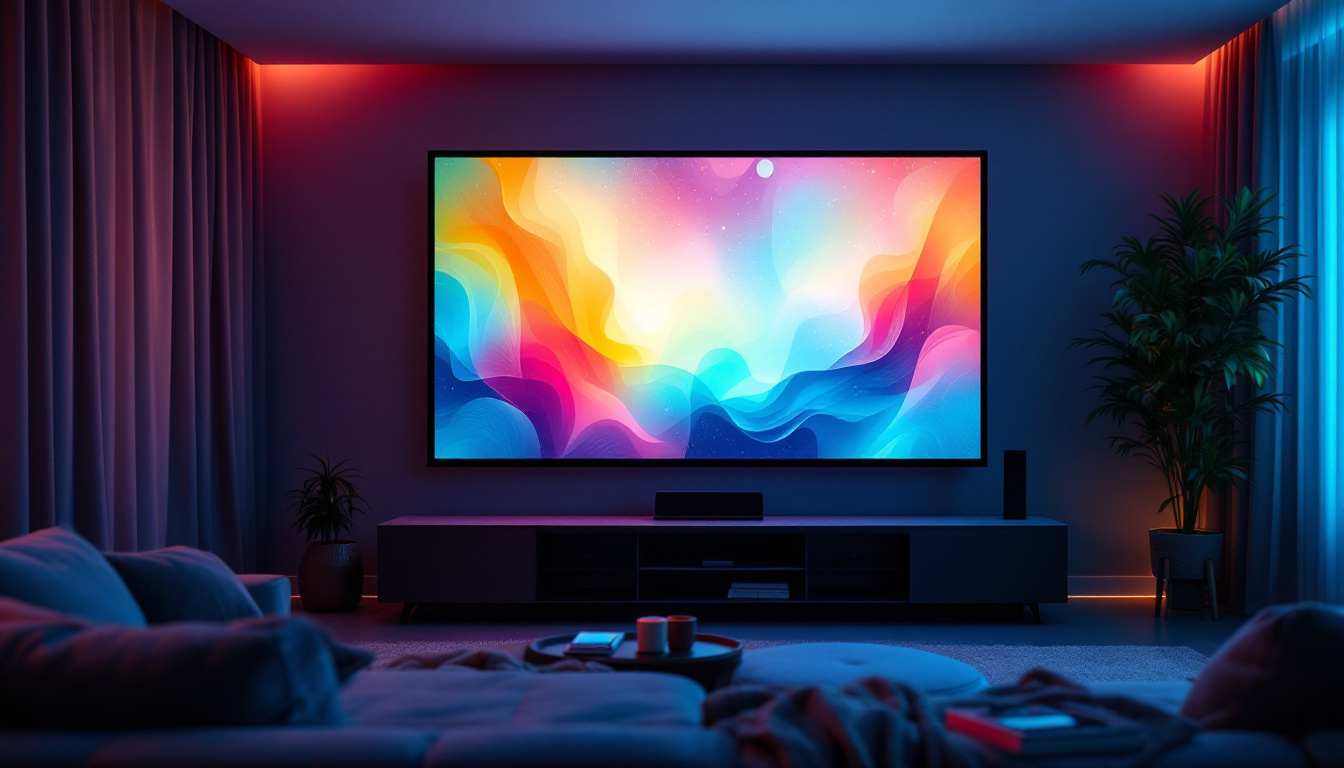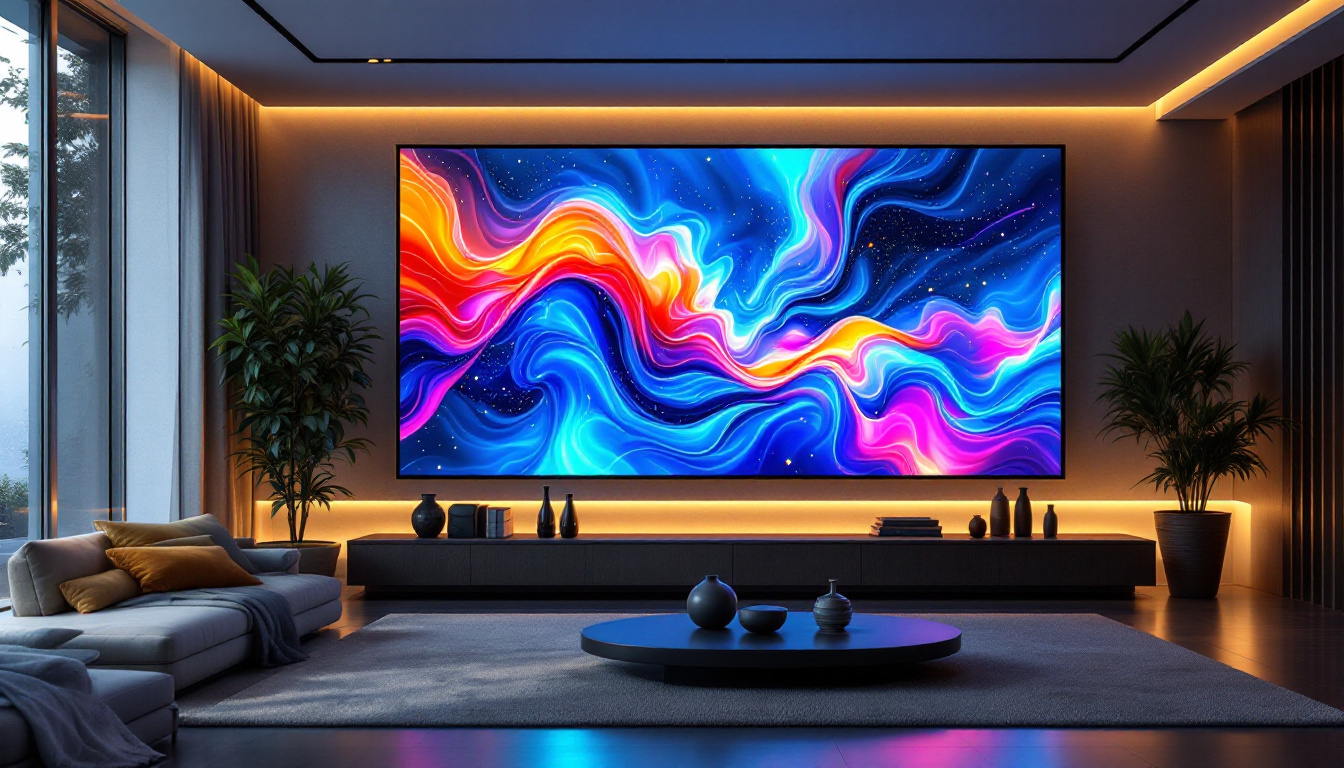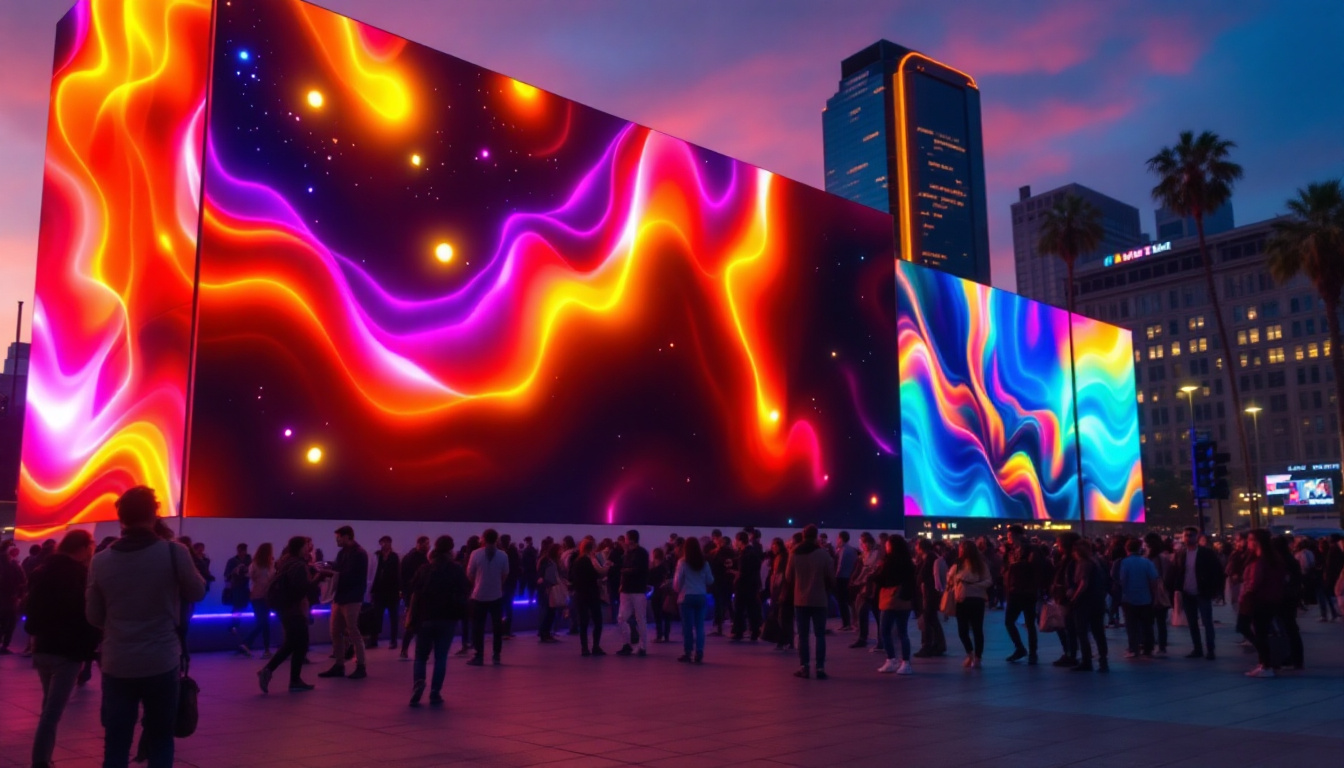In the modern age of technology, churches are increasingly adopting LED wall displays to enhance their worship experience. These vibrant screens not only serve functional purposes but also add an aesthetic dimension to the church environment. This article will explore the various aspects of LED walls for churches, including their benefits, types, installation considerations, and best practices for usage.
Understanding LED Wall Technology
LED (Light Emitting Diode) technology has revolutionized the way visual content is displayed. Unlike traditional projection systems, LED walls consist of numerous small diodes that emit light, creating bright and vivid images. This technology has become increasingly popular in various venues, including churches, due to its versatility and effectiveness.
How LED Walls Work
LED walls are made up of multiple panels, each containing a grid of LEDs. These panels can be arranged in various configurations to form a large display. The brightness and color of the images displayed are controlled by a digital signal, allowing for a wide range of visual content, from text to videos.
One of the key advantages of LED walls is their ability to maintain high visibility even in brightly lit environments. This is particularly beneficial for churches that may have natural light streaming in through windows or during daylight services. The technology behind LED walls also allows for a wider color gamut and faster refresh rates compared to traditional displays, which means that moving images appear smoother and more vibrant. This capability can significantly enhance worship experiences, as dynamic visuals can be seamlessly integrated into services.
Benefits of Using LED Walls in Churches
Implementing an LED wall in a church setting offers numerous advantages. One of the most significant benefits is enhanced visibility. The brightness of LED displays ensures that all congregants, regardless of their seating position, can clearly see the content being presented.
Additionally, LED walls can be used for a variety of purposes, including displaying song lyrics, sermon notes, announcements, and multimedia presentations. This versatility allows churches to engage their congregation in more dynamic ways, fostering a deeper connection to the message being delivered. Furthermore, the ability to easily switch between different types of content—whether it’s a live feed of the service, a pre-recorded video, or interactive elements—encourages a more immersive worship experience. Churches can also utilize LED walls for special events, such as holiday celebrations or community outreach programs, making them a valuable investment that can adapt to various needs and occasions.
Moreover, LED walls often come equipped with advanced software that allows for real-time editing and content management. This means that church staff can quickly update announcements or modify visuals on the fly, ensuring that the information presented is always current and relevant. The integration of social media feeds can also enhance community engagement, allowing congregants to see live updates and messages during services. As churches continue to evolve in their outreach and engagement strategies, LED wall technology stands out as a powerful tool for enhancing the overall worship experience.
Types of LED Walls
When considering an LED wall for a church, it’s essential to understand the different types available. Each type has its unique features and advantages, making it crucial to choose the right one based on specific needs and budget.
Indoor vs. Outdoor LED Walls
Indoor LED walls are designed for use within buildings and typically have a lower brightness level compared to outdoor models. They are often used in worship spaces, fellowship halls, and classrooms. The pixel pitch, which refers to the distance between the LEDs, is crucial for determining the clarity of the image. A smaller pixel pitch results in higher resolution and is better suited for close viewing distances.
Outdoor LED walls, on the other hand, are built to withstand the elements and have higher brightness levels to combat sunlight. These are ideal for churches that may host outdoor events or services, providing clear visibility even in bright conditions.
Fixed vs. Rental LED Walls
Fixed LED walls are permanently installed and are ideal for churches that plan to use the display regularly. These systems often provide better long-term value and can be customized to fit the church’s aesthetic and functional requirements.
Rental LED walls are typically used for special events or temporary installations. They offer flexibility and can be easily transported and set up. This option may be suitable for churches that host occasional large events but do not require a permanent display.
Installation Considerations
Installing an LED wall in a church requires careful planning and consideration. Various factors must be taken into account to ensure that the installation meets the needs of the congregation and enhances the worship experience.
Location and Placement
The location of the LED wall is critical. It should be placed in a position where it is easily visible to all congregants, without obstructing sightlines or creating distractions. Common placements include the front of the sanctuary, above the stage, or in areas where announcements are made.
Additionally, the size of the LED wall should be proportional to the space. A wall that is too large can overwhelm the environment, while one that is too small may not effectively convey the intended message.
Technical Requirements
Before installation, it’s essential to assess the church’s existing technical infrastructure. This includes evaluating power supply, data connections, and any necessary hardware such as video processors and control systems. Engaging with a professional AV consultant can help ensure that all technical requirements are met and that the installation is seamless.
Moreover, considering the acoustics of the space is vital. LED walls can sometimes interfere with sound systems, so it’s important to plan for audio-visual integration to avoid any disruptions during services.
Best Practices for Using LED Walls
Once an LED wall is installed, it’s important to utilize it effectively to maximize its impact on the congregation. Following best practices can enhance the overall worship experience and ensure that the technology serves its intended purpose.
Content Management
Content displayed on the LED wall should be engaging and relevant to the service. This includes using high-quality images and videos, ensuring text is easy to read, and maintaining a consistent theme that aligns with the church’s message. Regularly updating content can keep the congregation engaged and informed.
Utilizing software designed for content management can streamline this process, allowing for easy scheduling and updates. This is particularly useful for churches that have multiple services or events, as it ensures that the right content is displayed at the right time.
Training and Maintenance
Proper training for staff and volunteers who will operate the LED wall is crucial. Understanding how to use the technology effectively can prevent technical difficulties during services and ensure a smooth experience for the congregation.
Additionally, regular maintenance is essential to keep the LED wall functioning optimally. This includes cleaning the panels, checking connections, and performing software updates. Establishing a maintenance schedule can help prolong the life of the display and prevent unexpected issues.
Cost Considerations
Investing in an LED wall for a church involves various costs, which can vary significantly based on the type, size, and features of the display. Understanding these costs can help churches budget effectively and make informed decisions.
Initial Investment
The initial cost of purchasing and installing an LED wall can be substantial. Factors such as the quality of the panels, installation complexity, and additional hardware requirements will influence the overall price. It is advisable for churches to obtain quotes from multiple vendors and consider financing options if necessary.
While the upfront investment may seem daunting, it’s important to consider the long-term benefits and potential for increased engagement and attendance that a well-integrated LED wall can provide.
Ongoing Expenses
In addition to the initial investment, ongoing expenses must be factored into the budget. This includes electricity costs, maintenance, and potential software licensing fees for content management systems. Churches should also consider the cost of training staff to operate the system effectively.
Creating a comprehensive budget that accounts for both initial and ongoing expenses will help ensure that the church can sustain the investment over time.
Case Studies: Successful Implementations
Examining successful implementations of LED walls in churches can provide valuable insights and inspiration for those considering this technology. Various churches have utilized LED displays to enhance their worship experience in unique and effective ways.
Community Engagement
One church in a suburban area implemented an LED wall to enhance its community outreach efforts. By displaying information about local events, service times, and community initiatives, the church was able to foster a sense of connection and engagement among congregants and the broader community. The LED wall became a focal point for information dissemination, significantly increasing participation in church activities.
This case illustrates how an LED wall can serve not just as a tool for worship, but also as a bridge to the community, enhancing the church’s role as a local hub.
Enhanced Worship Experience
Another church integrated an LED wall into its worship services, using it to display dynamic visuals that complemented the music and sermon themes. By incorporating videos, lyrics, and graphics that aligned with the message, the church created a more immersive worship experience. Congregants reported feeling more engaged and connected during services, leading to increased attendance and participation.
This example highlights the potential of LED walls to transform worship services into multi-sensory experiences that resonate with congregants on a deeper level.
Conclusion
Incorporating an LED wall into a church setting can significantly enhance the worship experience, providing vibrant visuals that engage congregants and foster a deeper connection to the message. By understanding the technology, types, installation considerations, and best practices, churches can make informed decisions that align with their goals and budget.
As technology continues to evolve, LED walls represent a powerful tool for churches to reach their congregations in innovative ways. By investing in this technology, churches can not only improve their worship services but also strengthen their community ties and outreach efforts.
Discover LumenMatrix LED Display Solutions for Your Church
Ready to transform your church’s worship experience with vibrant, cutting-edge LED technology? LumenMatrix specializes in a wide array of LED display modules designed to captivate and engage your congregation. From Indoor and Outdoor LED Walls to Custom and Transparent Displays, our solutions are crafted to deliver unparalleled visual experiences. Embrace the future of visual communication with LumenMatrix and create an environment that resonates with impact and clarity. Check out LumenMatrix LED Display Solutions today and take the first step towards a more dynamic and inspiring worship space.









